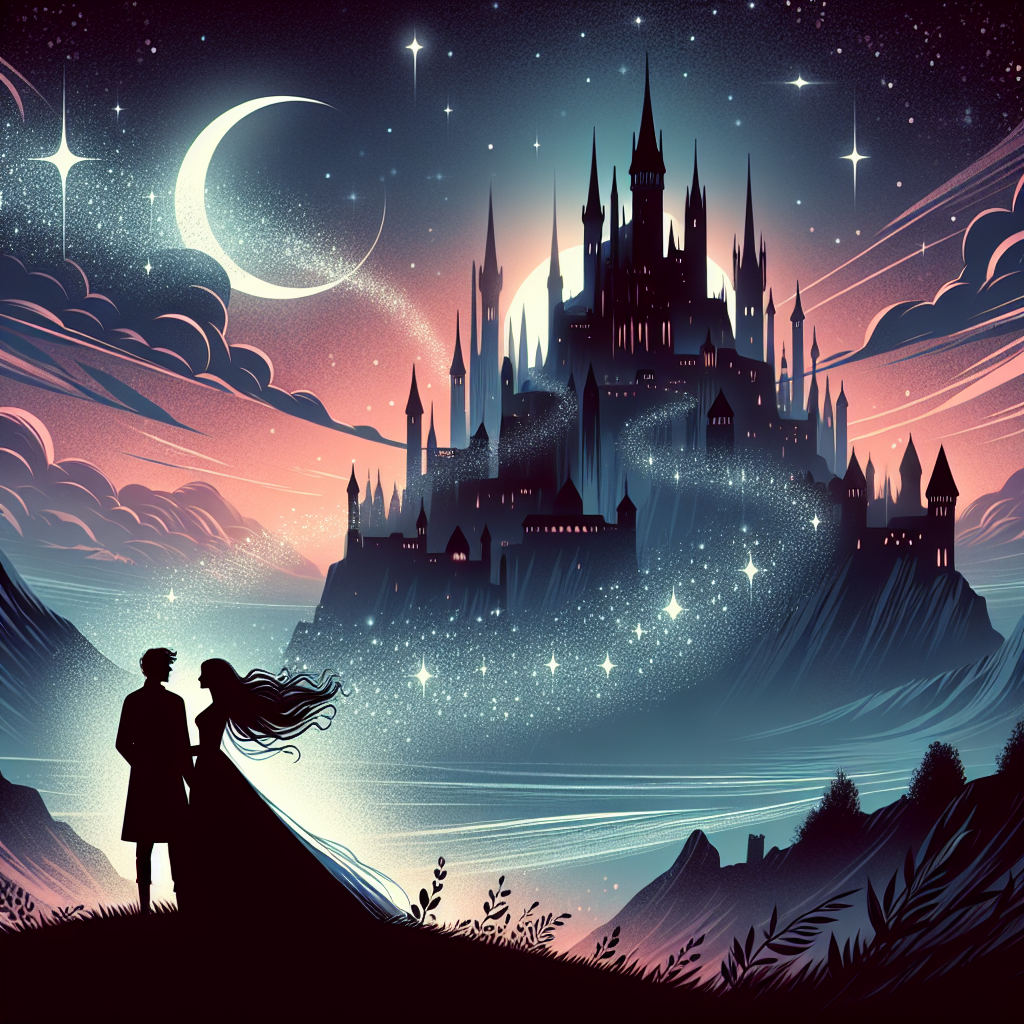From Medieval Knights to Modern Magic: A Reader's Journey Through Fantasy Romance History
Meta Description: Explore the captivating evolution of fantasy romance from medieval chivalric tales to contemporary supernatural love stories, discovering the genre's enduring appeal and transformative journey.
Fantasy romance has captivated readers for centuries, weaving together the intoxicating elements of passionate love and otherworldly magic. This enchanting genre transcends the boundaries between heart-pounding romance and imaginative fantasy, creating stories where dragons soar alongside destined lovers, and where magic itself becomes a metaphor for the transformative power of love.
But how did this beloved genre come to be? The answer lies in a fascinating journey that spans from medieval castle walls to modern mystical realms.
The Medieval Foundation: Where Love Met Legend
Chivalric Romance and Courtly Love
The roots of fantasy romance stretch back to the 12th through 15th centuries, when medieval storytellers first began combining tales of knightly valor with supernatural elements. These early narratives established the template that would influence countless future works.
Courtly love emerged as a central theme, featuring noble knights embarking on perilous quests—not just for glory, but for the hearts of unattainable ladies. These stories frequently incorporated magical elements that would feel familiar to modern fantasy romance readers: enchanted forests that tested true love, mystical artifacts that revealed destiny, and fearsome dragons guarding more than just treasure.
Foundational Works That Shaped the Genre
Several medieval masterpieces laid the groundwork for today's fantasy romance:
"The Romance of the Rose": This influential French allegorical poem masterfully blended romantic pursuit with fantastical imagery, creating a template for symbolic love stories set in magical contexts.
"Le Morte d'Arthur" by Sir Thomas Malory: Perhaps no work better exemplifies early fantasy romance than this collection of Arthurian legends. The tragic love between Lancelot and Guinevere, set against the backdrop of Camelot's magic-infused court, demonstrated how romantic passion could drive epic fantasy narratives.
"Tristan and Isolde": This haunting tale of forbidden love introduced the concept of magical intervention in romance through its famous love potion, while exploring themes of destiny and sacrifice that remain central to the genre today.
Renaissance Innovation: Expanding the Magical Canvas
Literary Giants and Their Contributions
The Renaissance period brought sophisticated writers who elevated fantasy romance to new artistic heights.
Edmund Spenser's "The Faerie Queene" (late 1500s) revolutionized the genre by creating an intricate allegorical world where knights, enchantresses, and mythical creatures inhabited a realm where love and honor were tested through magical trials. Spenser's work demonstrated how fantasy elements could serve both entertainment and deeper philosophical purposes.
William Shakespeare, while not primarily a fantasy writer, contributed significantly through plays like "A Midsummer Night's Dream" and "The Tempest." These works showed how magic could create both comedic misunderstandings and profound romantic revelations, establishing patterns that modern fantasy romance authors still employ.
The Birth of Modern Fantasy Romance
Victorian Pioneers
The 19th century witnessed the emergence of writers who would directly influence today's fantasy romance landscape.
George MacDonald, often considered the father of modern fantasy, created works like "Phantastes" (1858) that featured protagonists journeying through dreamlike magical realms while experiencing profound romantic and spiritual awakenings. His approach to blending internal emotional journeys with external magical adventures became a hallmark of the genre.
William Morris further developed these concepts in works like "The Well at the World's End" (1896), creating immersive secondary worlds where romantic quests drove the narrative. Morris's detailed world-building and focus on the transformative power of love established many conventions that fantasy romance writers still follow today.
Gothic Influences and Supernatural Romance
The Gothic tradition added darker, more mysterious elements to romantic fantasy. While novels like "Jane Eyre" and "Wuthering Heights" weren't pure fantasy, they incorporated supernatural elements that added haunting beauty to their love stories. These works showed how otherworldly elements could intensify romantic tension and emotional depth.
Bram Stoker's "The Lady of the Shroud" represented early supernatural romance, featuring mysterious otherworldly love interests that would later evolve into today's popular vampire and shapeshifter romances.
Early 20th Century: Establishing Modern Conventions
Pioneering Modern Fantasy Romance
The early 1900s saw authors who more directly anticipated contemporary fantasy romance:
E.R. Eddison's "The Worm Ouroboros" (1922) demonstrated how epic fantasy adventures could incorporate romantic subplots as central driving forces rather than mere decoration.
Lord Dunsany's "The King of Elfland's Daughter" (1924) explored the poignant theme of love transcending the boundaries between mortal and magical realms—a concept that remains enormously popular in modern fantasy romance.
The Six Pillars of Fantasy Romance
Understanding what makes fantasy romance so compelling requires examining its core elements:
1. Central Romantic Relationships
The love story isn't just a subplot—it's the beating heart of the narrative. Whether featuring destined mates, enemies-to-lovers arcs, or forbidden attraction, the romantic relationship drives character development and plot progression.
2. Immersive Fantasy Worlds
These aren't mere backdrops but living, breathing environments that shape the romance itself. Magical kingdoms, faerie courts, or supernatural cities become characters in their own right, influencing how love develops and faces challenges.
3. Magic as Metaphor and Mechanism
Magic serves dual purposes: as a plot device creating obstacles or solutions, and as a metaphor for love's transformative power. The connection between lovers might manifest through magical bonds, shared powers, or mystical recognition.
4. Archetypal Characters
Fantasy romance features recognizable yet evolving character types:
- Empowered heroines who discover inner strength through love and adversity
- Complex love interests ranging from brooding immortals to noble warriors
- Supernatural beings that challenge human understanding of love and connection
5. Themes of Destiny and Transformation
Characters often discover hidden powers, fulfill ancient prophecies, or overcome supernatural curses. Personal growth becomes intertwined with romantic development, suggesting that true love enables individuals to become their best selves.
6. High-Stakes Drama
The fate of kingdoms, worlds, or entire species often hangs in the balance. This elevation of stakes makes every romantic decision carry weight beyond personal happiness, adding layers of tension and meaning to the love story.
Contemporary Fantasy Romance: A Thriving Genre
Today's fantasy romance has exploded into numerous subgenres, from urban fantasy featuring supernatural creatures in modern settings to epic fantasy with intricate world-building rivaling any pure fantasy novel. Authors like Patricia Briggs, Nalini Singh, and Sarah J. Maas have created complex magical worlds where romance drives multi-book narratives exploring themes of power, identity, and belonging.
Digital platforms have democratized publishing, allowing new voices to experiment with genre conventions while honoring the rich traditions established by centuries of storytellers. Readers can now find fantasy romance featuring every type of magical being imaginable, from traditional vampires and werewolves to innovative magical systems and completely original supernatural races.
The Enduring Appeal
Fantasy romance endures because it speaks to fundamental human desires: the longing for transformative love and the dream of worlds where magic makes anything possible. In combining these elements, the genre offers readers both emotional satisfaction and imaginative escape, proving that the marriage of love and magic remains as compelling today as it was in medieval courts.
The genre's evolution from chivalric romances to contemporary supernatural love stories demonstrates literature's ability to adapt timeless themes to changing audiences while maintaining the core magic that makes hearts race and imaginations soar.
Whether you're drawn to courtly medieval knights or modern-day shapeshifters, fantasy romance continues to prove that some combinations are truly magical—and some loves are worth waiting centuries to discover.
💝 Ready to Explore More Romance?
If you enjoyed this article about Fantasy writing, discover thousands of captivating love stories on our platform.
Download App







